Holiday Cookie 101: Tips and Tricks for Making The Best Holiday Cookies! Sharing everything I’ve learned so your cookies turn out perfectly!
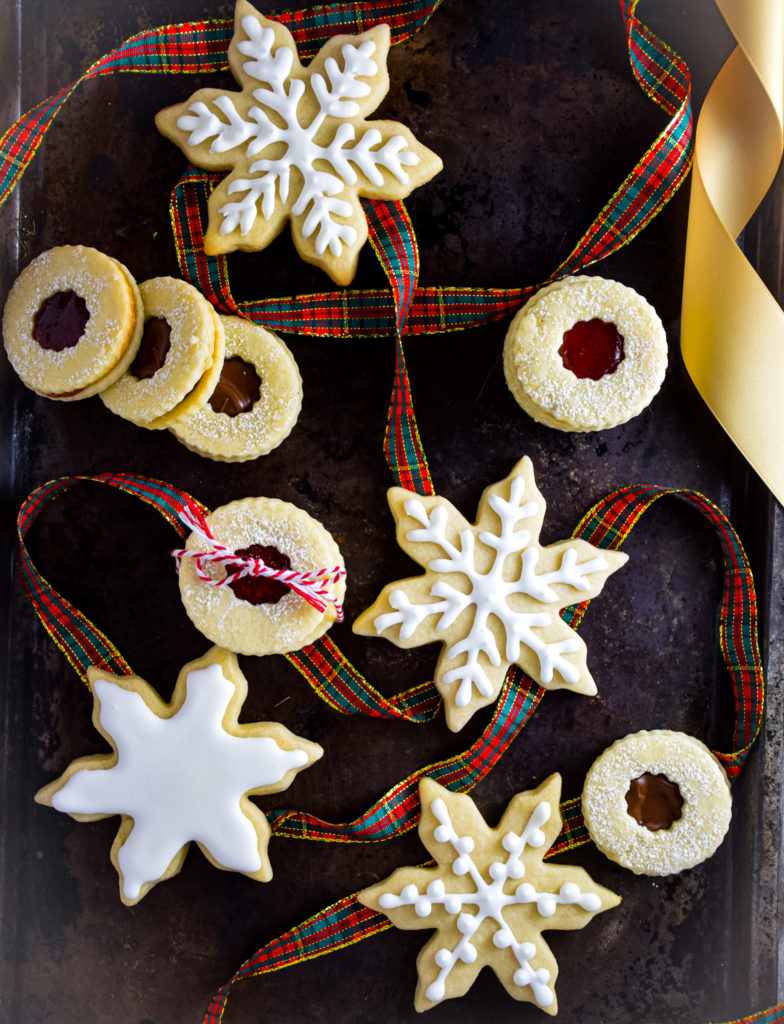
Who doesn’t love a good holiday cookie baking sesh!? It brings so many happy and fun memories of childhood, at least for me. These days there are so many places you can buy cookies and while they are wonderful, I think there is something nice about baking at least one batch yourself just to get in the spirit. Whether you are baking one batch or dozens of cookies there are a few things you should know before you get started to ensure that your cookies will turn out perfectly!
This post contains affiliate links. If you purchase a product through these links I may earn a few pennies. Thanks for keeping this free blog going!
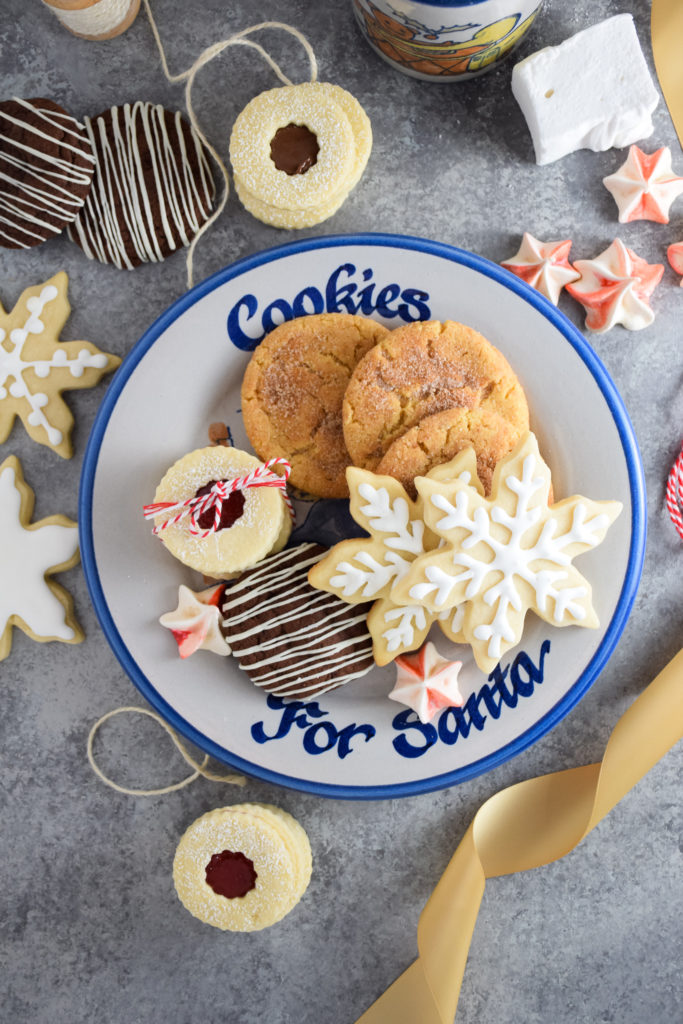
Holiday Cookie 101: Tips and Tricks for Making The Best Holiday Cookies
I wasn’t always a good baker if I am being honest. I started learning how to cook while I was in college and was much more into savory, dinner type dishes than baking up sweets. However, every year when the holidays would roll around I would get an urge to bake.
I have learned so much over the years and many failed batches of cookies haha. There are some fundamental things about baking that I have learned and now take for granted when I read a recipe. I thought that these would be important things to share for all you who might be like me back in the day when I would only bake a few times a year.
Baking can be so frustrating because it takes a lot of time and effort to get all the ingredients together and measure and mix everything for the end result to bake up bad. So, learn from my mistakes and read up on all these tips so you’ll get your cookies right the first time around!

How To Make The Best Holiday Cookies
Let’s imagine the scenario… you’ve searched the internet and found the most delicious looking cookies and you are all excited. You download the ingredients and order them. Now you are all ready to get to baking! So you immediately start whisking together the dry ingredients and…. you realize you don’t have enough eggs!
A lot of mistakes in baking can be avoided with a few tips you need to take into consideration before you start baking!
- Read the Whole Recipe – seems like a no brainer but I can’t tell you how many times I used to get excited and get ahead of myself while baking. Times and temperatures matter a lot when baking (more on that later) so it’s imperative that you know what is coming next to avoid mistakes. By reading, and rereading, the whole recipe start to finish you can avoid a lot of confusion and mishaps.
- Mise en Place – This is French term that basically means “everything in its place” or “putting everything in place.” I cannot stress this step enough! I used to work a lot with restaurants and chefs and I learned so much from them. One of the most important things I learned is that before they begin cooking or baking, they measure out all of the ingredients for that recipe. All the flour, sugars, eggs, etc. are all accounted for before even one little thing gets mixed or melted. This is an important step for a few reasons:
- It ensures that you actually have all of your ingredients on hand and enough of each ingredient.
- You don’t waste time measuring things out during the process and waste time. It helps you not get confused about how much salt vs sugar and constantly going back forth between your bowl and recipe.
- Mise en Place also gives you time to have everything at right the temperature. Eggs need to be cold, butter should be softened. Things like that.

Holiday Cookie 101: Tips and Tricks for Making The Best Holiday Cookies
Speaking of temperatures… They are very important while baking! There are several different temperatures that are important while baking so I am going to break them down here. This is not an all inclusive list but these are the most common ones I come across. Definitely read the recipe you are using and make note of temperatures mentioned and be sure you pay attention to those.
3. Oven Temperature and Preheating – For cookies, preheating the oven to the correct temperature is important because it determines how quickly a cookie may spread or puff up. Cookies typically bake very quickly so ensuring you have the correct temperature will help with cookies not burning and also to bake properly. Ex: an oven that is too hot may cause the butter in the cookie to melt too quickly before the sugars and flour spread meaning you could wind up with a cookie that has frizzled or fried edges. I use this thermometer to double check the temperature of my oven. Also, all that opening and closing the oven can cause the temperature to drop quickly. My suggestion is to get in and out of the oven as quickly as possible. Between batches, allow some time for the oven to come back to temperature.
4. Temperature of Ingredients – If a recipe calls for butter to be softened or eggs to be at room temperature, then make sure that you do that! This is important because when it comes to baking temperature will cause different elements of the recipe to bind differently #science. Ex: room temperature butter will cream with sugar differently than cold butter. Melted butter will cause cookies to spread and alternatively cold butter will cause pie crusts to be flaky. Egg proteins bind differently to sugars and gluten at different temperatures, so depending on what the desired result is you will need to be paying attention to these temperatures.
5. Temperature of Cookie Dough – Like I alluded to above, the temperature of the dough before you bake is important! Warm dough spreads more. Which sometimes we want, like in these Brown Butter Peanut Butter Snickerdoodles. We want the cookies to spread a little so that they will puff up and then fall and get those signature Snickerdoodle cracks to catch all that yummy cinnamon sugar. However in our Sugar Cookies, we want them to hold their shape and not get too puffy. So we want this dough to be chilled before baking.
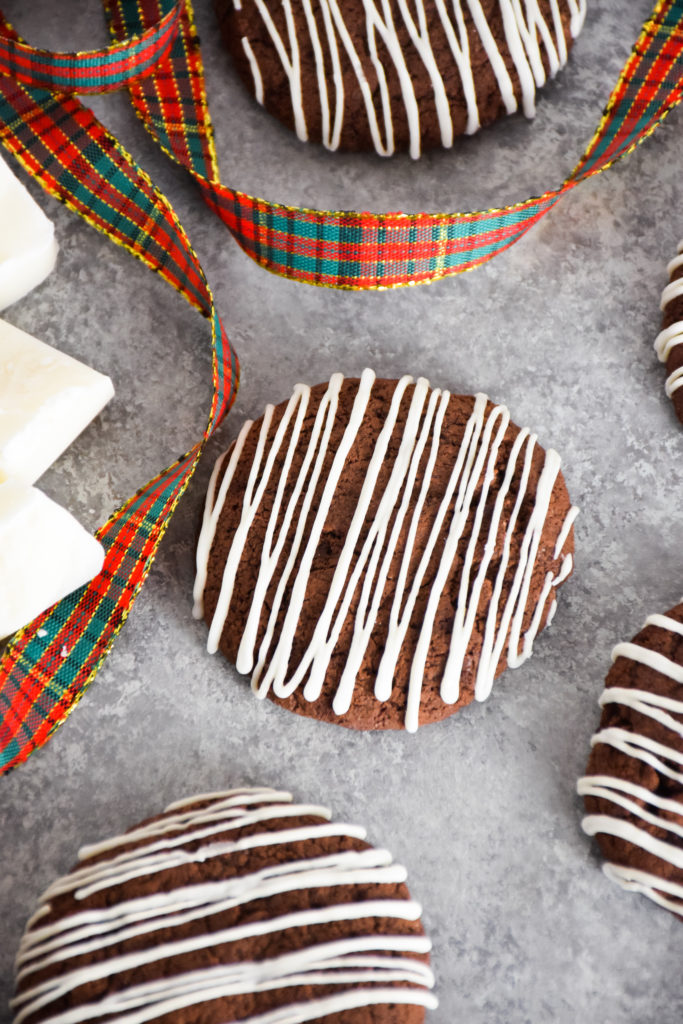
Types of Ingredients in Cookie Baking and Why They are Important
6. Salted vs Unsalted Butter – In nearly all cooking and baking recipes you should be using unsalted butter. Why? Because you want to control the amount of salt in your recipes. I only buy and use unsalted butter in all my recipes. Pretty much the only time you would want to use salted butter is for spreading on something like toast. In that case, I would just use unsalted butter and do my own salting with flaky salt. If you have salted butter on hand and plan to use it in baking, then reduce the amount of salt in the recipe by half or leave it out all together. Salt in baking is typically there is add balance to sweet flavors.
7. Oil and Natural Nut Butters – I prefer to use natural peanut butter in my smoothies but nut butters that need to be stirred before using don’t always work as well in baking. Conventional nut butters, like Jif, have emulsifiers that keeps the oils suspended in the fats. Most recipes use this type of nut butter and switching out for a natural version would not produce the same results. Therefore you need to pay attention to which type of nut butter the recipe calls for. A note about other types of oils is that they often don’t play well in cookies and can cause the cookies to have frizzled or fried edges. Butter works better for dense soft cookies.
8. Type of Salt — Table Salt vs Kosher Salt vs Fine Sea Salt – Not all salts are made the same and they cannot be substituted willy nilly for one another. Traditional table salt like Morton Iodized salt is much saltier per teaspoon than kosher salt. Fine Sea Salt has a different weight and salinity than kosher salt. Kosher salt also comes in different varieties. I exclusively use Diamond Crystal Kosher Salt unless otherwise specified. This particular salt is a flaky, light version of kosher salt that is great for marinades, baking and sprinkling. It’s less salty and binds and dissolves well. A good salt will go a long way in your cooking and baking my friends. I don’t ever use table salt because I think it has a metallic taste. I do keep fine sea salt
on hand for occasional baking and BMW uses it for making his bread.
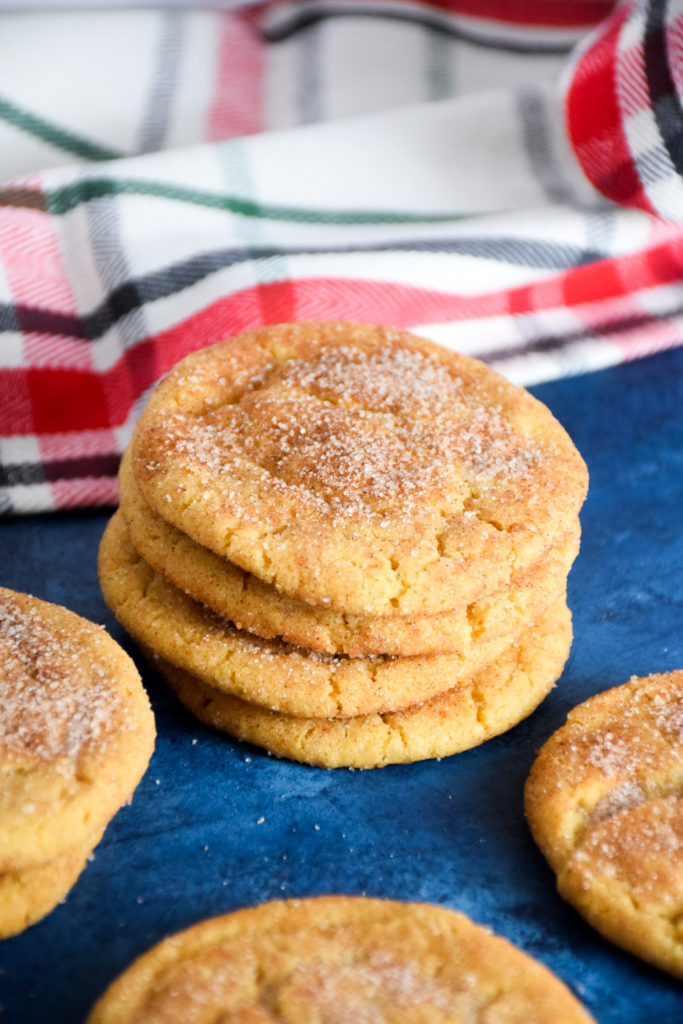
What You Need To Know About Flour In Baking Recipes
Not all flours are the same! And just like salt, they cannot be substituted for one another without consequence. Let’s dive in!
9. All Purpose Flour vs King Arthur Flour – I use this example because it is what is most on grocery store shelves and what you are most likely using when baking. Nearly all recipes from big magazines or recipe test kitchens use Gold Medal Flour. This is because this is what can be found at almost all stores and therefore produces the most consistent results for the average home baker. In my recipes, I use Gold Medal Flour unless otherwise noted. I do like King Arthur All Purpose Flour but it is much heavier and reacts differently in recipes.
10. Weighing Flour – Did I just say flour can be heavier than other flour? Yes, I did. If you’ve been baking a while, then you’ve probably noticed many recipes include a measurement in cups as well as another measure in grams. Why is this? Because weight is a much more accurate measurement for flour than volume (which is how things are measured in cups.) Once I started weighing my flour, my baking recipes became much more consistent and therefore achieved the desired outcome. Ex: no more unexplained cakey cookies! I definitely suggest investing in a kitchen scale if you intend to do any baking.
11. Rolling Out Cookie Dough – This is an important step and often where more flour is needed. I typically use flour generously during this step especially in my Sugar Cookies or Linzer Cookies. You want to ensure that these cookies come out with clean edges that will hold their shape. Flour will help you do that. Drop cookies that are rolled or scooped don’t need this extra flour. If you find your cookies sticking to your hands, try rubbing your hands with a tiny amount of vegetable or olive oil. This will prevent the dough from sticking to your hands. Another tip is to dust your cookie cutters in flour. This will help the cookies not stick and come away from the dough with clean edges.
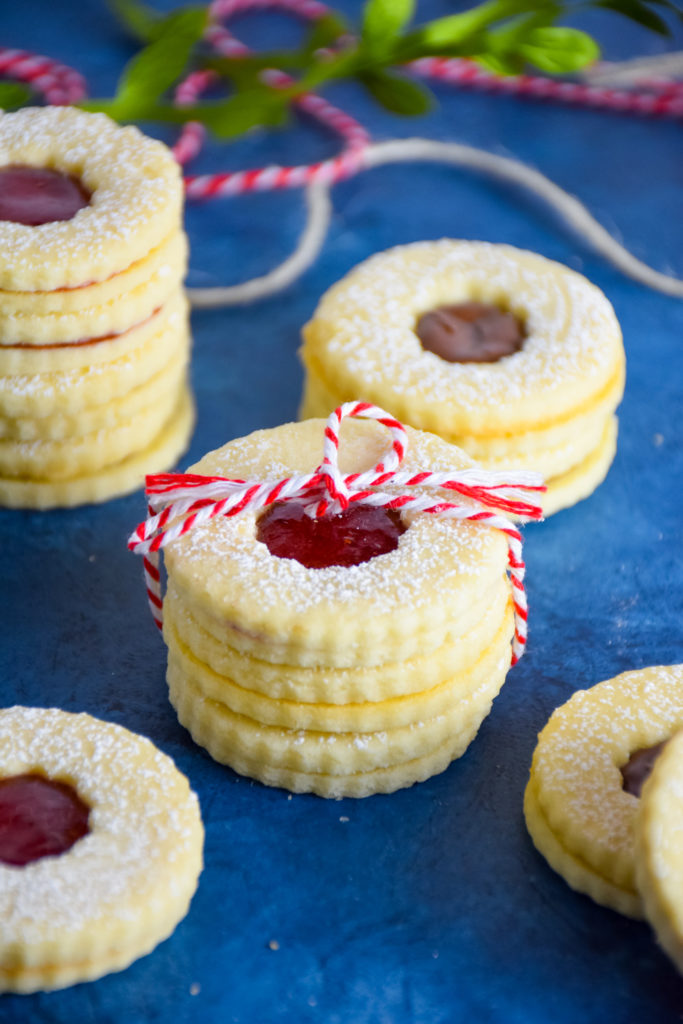
Holiday Cookie 101: Tips and Tricks for Making The Best Holiday Cookies
13. When To Take Cookies Out Of The Oven – It is always better to take cookies out of the oven a little earlier than leave them too long. Nobody wants a cookie with burnt edges. You can always put cookies back in the oven for a minute or two if needed.
14. Leaving Cookies To Cool – Cookies will continue to bake or set while on a hot baking sheet. Most recipes will call for you to leave the cookies on the sheet for a few minutes and then transfer to a wire rack. This is for a few reasons. The cookie sheet will allow the edges or centers to set and therefore not fall apart during transfer. Cooling on a wire rack allows the cookies to breathe a bit and allow any residual moisture to evaporate and not cause cookies to get mushy in the center from trapped hot air. If your cookies get left in the oven a bit too long, transfer them immediately to a wire rack to prevent further baking.
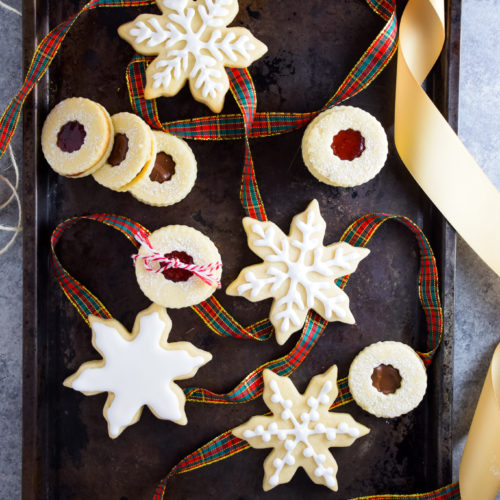
How To Make The Best Holiday Cookies
Instructions
- Read the Whole Recipe - seems like a no brainer but I can't tell you how many times I used to get excited and get ahead of myself while baking. Times and temperatures matter a lot when baking (more on that later) so it's imperative that you know what is coming next to avoid mistakes. By reading, and rereading, the whole recipe start to finish you can avoid a lot of confusion and mishaps.
- Mise en Place - This is French term that basically means "everything in its place" or "putting everything in place." I cannot stress this step enough! I used to work a lot with restaurants and chefs and I learned so much from them. One of the most important things I learned is that before they begin cooking or baking, they measure out all of the ingredients for that recipe. All the flour, sugars, eggs, etc. are all accounted for before even one little thing gets mixed or melted. This is an important step for a few reasons: It ensures that you actually have all of your ingredients on hand and enough of each ingredient. You don't waste time measuring things out during the process and waste time. It helps you not get confused about how much salt vs sugar and constantly going back forth between your bowl and recipe. Mise en Place also gives you time to have everything at right the temperature. Eggs need to be cold, butter should be softened. Things like that.
- Oven Temperature and Preheating - For cookies, preheating the oven to the correct temperature is important because it determines how quickly a cookie may spread or puff up. Cookies typically bake very quickly so ensuring you have the correct temperature will help with cookies not burning and also to bake properly. Ex: an oven that is too hot may cause the butter in the cookie to melt too quickly before the sugars and flour spread meaning you could wind up with a cookie that has frizzled or fried edges. I use this thermometer to double check the temperature of my oven. Also, all that opening and closing the oven can cause the temperature to drop quickly. My suggestion is to get in and out of the oven as quickly as possible. Between batches, allow some time for the oven to come back to temperature.
- Temperature of Ingredients - If a recipe calls for butter to be softened or eggs to be at room temperature, then make sure that you do that! This is important because when it comes to baking temperature will cause different elements of the recipe to bind differently #science. Ex: room temperature butter will cream with sugar differently than cold butter. Melted butter will cause cookies to spread and alternatively cold butter will cause pie crusts to be flaky. Egg proteins bind differently to sugars and gluten at different temperatures, so depending on what the desired result is you will need to be paying attention to these temperatures.
- Temperature of Cookie Dough - Like I alluded to above, the temperature of the dough before you bake is important! Warm dough spreads more. Which sometimes we want, like in these Brown Butter Peanut Butter Snickerdoodles. We want the cookies to spread a little so that they will puff up and then fall and get those signature Snickerdoodle cracks to catch all that yummy cinnamon sugar. However in our Sugar Cookies, we want them to hold their shape and not get too puffy. So we want this dough to be chilled before baking.
- Salted vs Unsalted Butter - In nearly all cooking and baking recipes you should be using unsalted butter. Why? Because you want to control the amount of salt in your recipes. I only buy and use unsalted butter in all my recipes. Pretty much the only time you would want to use salted butter is for spreading on something like toast. In that case, I would just use unsalted butter and do my own salting with flaky salt. If you have salted butter on hand and plan to use it in baking, then reduce the amount of salt in the recipe by half or leave it out all together. Salt in baking is typically there is add balance to sweet flavors.
- Oil and Natural Nut Butters - I prefer to use natural peanut butter in my smoothies but nut butters that need to be stirred before using don't always work as well in baking. Conventional nut butters, like Jif, have emulsifiers that keeps the oils suspended in the fats. Most recipes use this type of nut butter and switching out for a natural version would not produce the same results. Therefore you need to pay attention to which type of nut butter the recipe calls for. A note about other types of oils is that they often don't play well in cookies and can cause the cookies to have frizzled or fried edges. Butter works better for dense soft cookies.
- Type of Salt -- Table Salt vs Kosher Salt vs Fine Sea Salt - Not all salts are made the same and they cannot be substituted willy nilly for one another. Traditional table salt like Morton Iodized salt is much saltier per teaspoon than kosher salt. Fine Sea Salt has a different weight and salinity than kosher salt. Kosher salt also comes in different varieties. I exclusively use Diamond Crystal Kosher Salt unless otherwise specified. This particular salt is a flaky, light version of kosher salt that is great for marinades, baking and sprinkling. It's less salty and binds and dissolves well. A good salt will go a long way in your cooking and baking my friends. I don't ever use table salt because I think it has a metallic taste. I do keep fine sea salt on hand for occasional baking and BMW uses it for making his bread.
- All Purpose Flour vs King Arthur Flour - I use this example because it is what is most on grocery store shelves and what you are most likely using when baking. Nearly all recipes from big magazines or recipe test kitchens use Gold Medal Flour. This is because this is what can be found at almost all stores and therefore produces the most consistent results for the average home baker. In my recipes, I use Gold Medal Flour unless otherwise noted. I do like King Arthur All Purpose Flour but it is much heavier and reacts differently in recipes.
- Weighing Flour - Did I just say flour can be heavier than other flour? Yes, I did. If you've been baking a while, then you've probably noticed many recipes include a measurement in cups as well as another measure in grams. Why is this? Because weight is a much more accurate measurement for flour than volume (which is how things are measured in cups.) Once I started weighing my flour, my baking recipes became much more consistent and therefore achieved the desired outcome. Ex: no more unexplained cakey cookies! I definitely suggest investing in a kitchen scale if you intend to do any baking.
- Rolling Out Cookie Dough - This is an important step and often where more flour is needed. I typically use flour generously during this step especially in my Sugar Cookies or Linzer Cookies. You want to ensure that these cookies come out with clean edges that will hold their shape. Flour will help you do that. Drop cookies that are rolled or scooped don't need this extra flour. If you find your cookies sticking to your hands, try rubbing your hands with a tiny amount of vegetable or olive oil. This will prevent the dough from sticking to your hands. Another tip is to dust your cookie cutters in flour. This will help the cookies not stick and come away from the dough with clean edges.
- When To Take Cookies Out Of The Oven - It is always better to take cookies out of the oven a little earlier than leave them too long. Nobody wants a cookie with burnt edges. You can always put cookies back in the oven for a minute or two if needed.
- Leaving Cookies To Cool - Cookies will continue to bake or set while on a hot baking sheet. Most recipes will call for you to leave the cookies on the sheet for a few minutes and then transfer to a wire rack. This is for a few reasons. The cookie sheet will allow the edges or centers to set and therefore not fall apart during transfer. Cooling on a wire rack allows the cookies to breathe a bit and allow any residual moisture to evaporate and not cause cookies to get mushy in the center from trapped hot air. If your cookies get left in the oven a bit too long, transfer them immediately to a wire rack to prevent further baking.
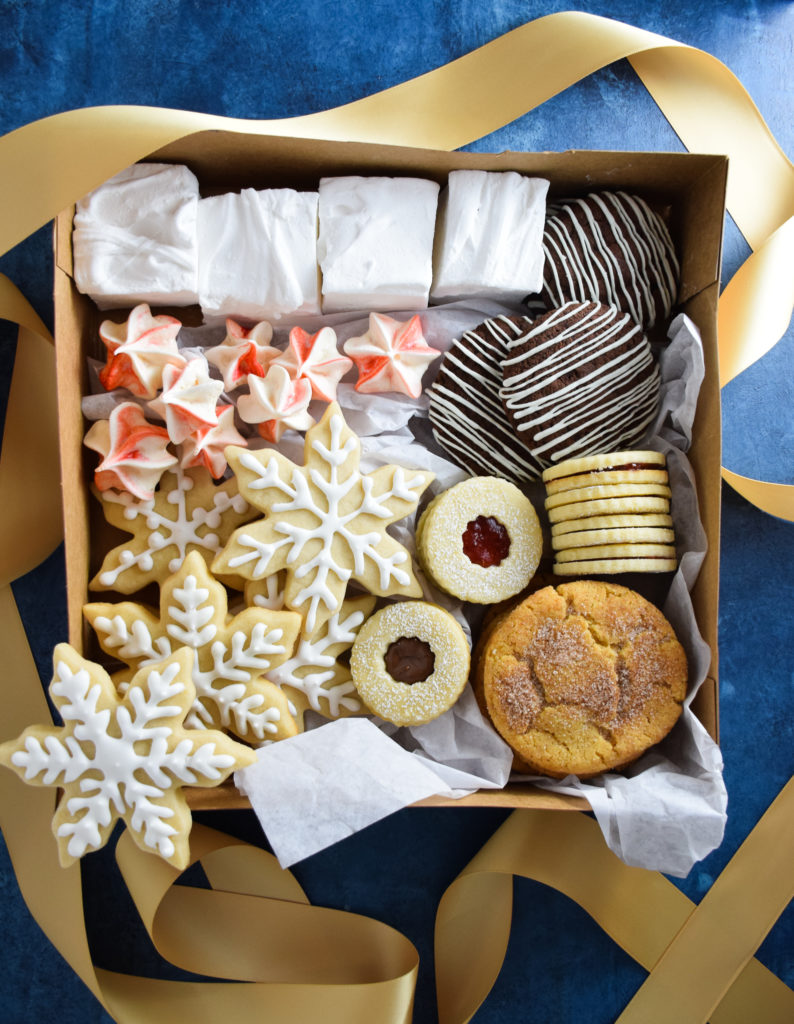
My Favorite Kitchen Tools for Cookie Baking
These are all products that I have in my kitchen and I have found to make cookie baking easier!
Kitchen Scale for weighing flour
Adjustable Rolling Pin has made it so much easier to consistent thickness for my thick and thin cookies
Wire Rack for Cooling
Fish Spatula for transferring cookies — so much better than a regular spatula
My Holiday 2020 Cookies
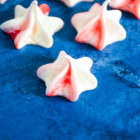
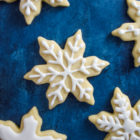
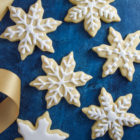
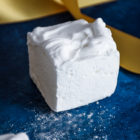
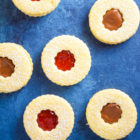
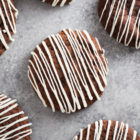
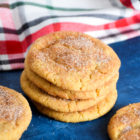
Leave a Reply